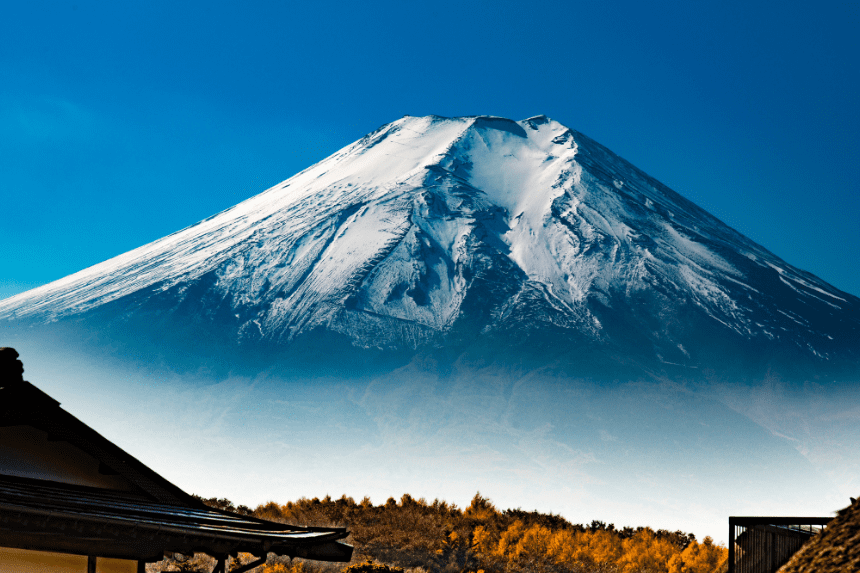Thousands of people from all over come to Mount Fuji to climb for an amazing adventure. Mount Fuji is among the most well-known sites in Japan, given its amazing vistas, recognizable cone form, and cultural value. Still, it’s important to be aware of the possible hazards associated with mountain climbing, especially if one wants to do it outside of the designated climbing season. Mount Fuji’s official climbing season runs from early July to early September; while many people want to explore the summit during the off-season, these excursions can be laden with generally underappreciated hazards. The reasons Mount Fuji climbing outside the official season is dangerous will be discussed in this article, together with tips on how hikers could guarantee their safety. Using real-world examples, we will address the difficulties of off-season treks and the need to adhere to local government recommendations.
Why is mount Fuji climbing off-season so dangerous?
Off-season Mount Fuji climbing carries various risks, mostly related to erratic and usually strong weather conditions. Standing at 3,776 meters (12,388 ft), Mount Fuji is a high-altitude hike that calls for both knowledge of fast-changing weather patterns and preparation. With generally consistent weather, more daylight hours, and accessible infrastructure including emergency shelters and staffed cabins, the peak welcomes hikers more during the official climbing season. Regretfully, this stability disappears after the formal season concludes. Hikers who climb Mount Fuji outside of the regular season run across severe conditions like low visibility, frigid temperatures, and lots of snow. Unannounced, sudden snowfall can cause one to lose their bearings easily. High elevations can cause temperatures to drop below freezing, and the wind chill to aggravate the cold, therefore increasing the danger of hypothermia. Particularly in cases when routes are not properly defined and the weather is so erratic, one runs far more danger of becoming lost or hurt. Furthermore, of great importance is the absence of access to vital support services. All medical services along the paths close when the climbing season ends, and rescue crews are not positioned there either. Should a climber experience an emergency, such as altitude sickness or an injury, rescue personnel could not arrive right away or, in certain cases, might not be able to reach the individual at all owing to severe weather conditions. Mount Fuji climbing off-season is thus considerably riskier than during the official months for these reasons.
What became of the last climber?
A recent incident involving a university student, 27 years old, highlights the risks associated with off-season Mount Fuji climbing. In search of a missing cell phone, the Chinese student living in Japan chose to climb Mount Fuji during the off-peak season. The student first walked the Fujinomiya path, which rises almost 3,000 meters (9,800 feet) above sea level. He regretfully misplaced his crampons, the necessary spikes used on shoes for improved traction on ice. Not able to go safely down the mountain without these tools, the student called for help. He was pulled from the mountain in a helicopter rescue. This first rescue took place on Tuesday and acted as a wake-up call for off-season climbing. The student decided to go back to Mount Fuji just days later to get belongings he had left behind, including his phone, despite the life-threatening circumstances. This time, his health got worse since he had altitude sickness, which can strike those who climb too fast or in high-altitude surroundings devoid of appropriate acclimatization. In severe circumstances, altitude sickness can cause loss of consciousness; otherwise, it causes headaches, dizziness. Once more rescued, this time on a Saturday, he emphasizes the great risks of climbing Mount Fuji off-season carry. The rescues acted as a reminder of how rapidly the Mount Fuji climbing conditions may change and how difficult it is to seek assistance during the off-season. Authorities noted that the absence of accessible medical facilities and the erratic weather made it far more difficult for rescues to help climbers during this time.
Why Should One Apply Official Climbing Guidelines?
The experience of the 27-year-old student shows the need to follow the rules established by the Japanese authorities for Mount Fuji climbing. The government advises that only during the official climbing season, when all paths are open, rescue teams are positioned, and shelters are accessible, should climbers aim for the top. These steps guarantee the general safety of every mountaineer. Mount Fuji’s trails are closed outside the official season, hence, access to the same degree of support services is not possible. Although some hikers would believe they could still ascend without the official infrastructure, the mountain’s erratic character can rapidly convert a fun trip into a hazardous, possibly fatal one. Authorities have underlined time and again the need to follow the climbing season since off-season conditions greatly raise the likelihood of adverse weather-related lost, injured, or trapped occurrences. Off-season climbs carry far more danger for altitude sickness, dehydration, or hypothermia, hence, it is imperative to observe the required safety rules. Read another article on Climbing K2
How Can Mount Fuji Climbing Hikers Stay Safe?
Those who are resolved to climb Mount Fuji should schedule the trip during the official climbing season. Hikers gain from safer surroundings during this time with open trails, emergency shelters, and rescue personnel. Although the weather is still erratic, generally it is more consistent, and the longer days provide climbers more daylight hours to finish the ascent. By making sure they have the right gear—crampons, appropriate clothes for different weather, including enough food and water—climbers should be ready for the possible hazards. Although it is still possible to climb outside the season, it should only be done under professional direction and great caution. If off-season climbing is unavoidable, one should see experts ahead of time and get ready for the demanding circumstances. It is especially advised to have the help of seasoned guides who understand the difficulties of off-season walking. Climbers should also have the necessary means of communication to ask for assistance and be ready for possible crises. In an emergency, having access to a satellite phone or personal locating beacon greatly raises the possibility of rescue. Among the most crucial safety advice is knowing when to turn back. Should the weather get bad or a climber start to feel sick, such as with altitude sickness, it is imperative to stop the ascent and get aid right away.
In conclusion, Mount Fuji climbing depends on following vital safety rules.
Mount Fuji climbing is an amazing challenge in general, but it’s crucial to be aware of the hazards involved, especially if one wants to climb outside the official seasons. The fast-changing weather of the mountain makes it challenging for climbers to properly negotiate and raises their risk of becoming lost or wounded. Following the approved climbing rules helps you greatly lowers the hazards involved in the climb and enables you to enjoy the experience free from compromising your safety. The incident of the 27-year-old student reminds us quite sharply of the risks involved in ignoring the official climbing season. Whether your intended climb is during the official season or you are thinking of an off-season one, you must be ready, educated, and careful. Never undervaluate the strength of the mountain; always give safety top priority. Remember, a good climb guarantees your safe return rather than only getting to the top. Hikers can safely appreciate Mount Fuji’s difficulty and beauty by following the correct procedures.








